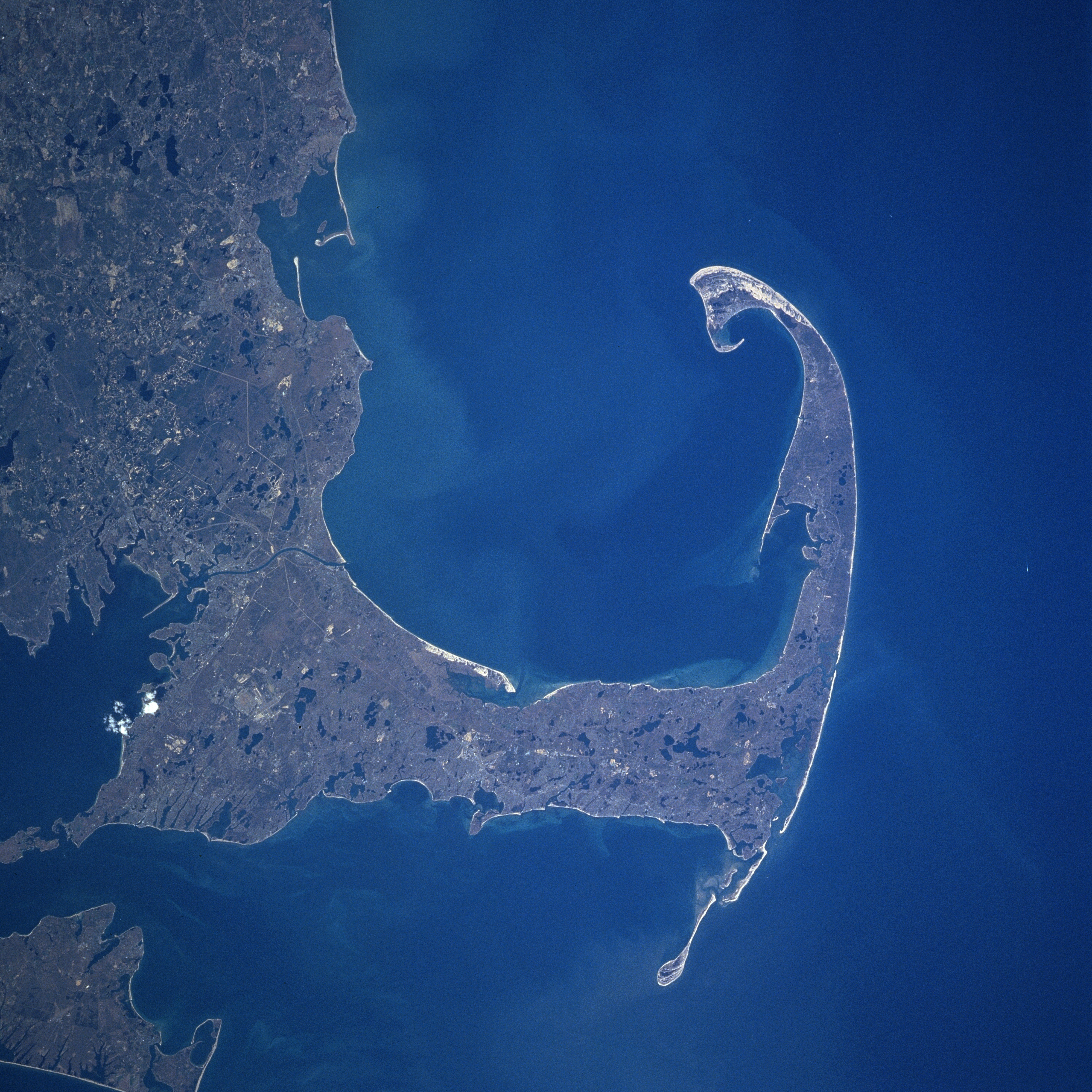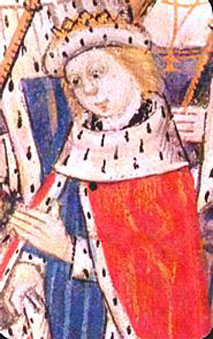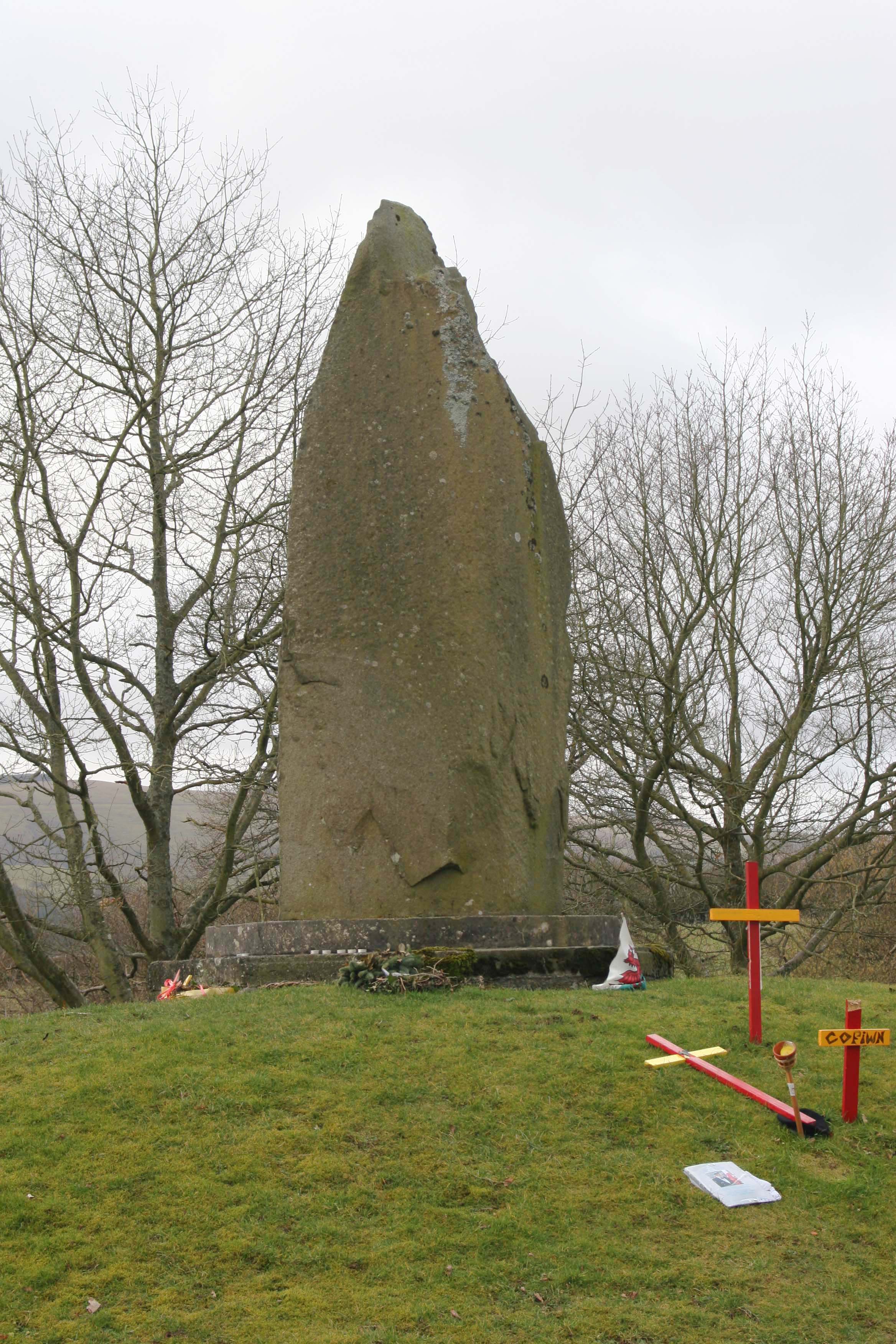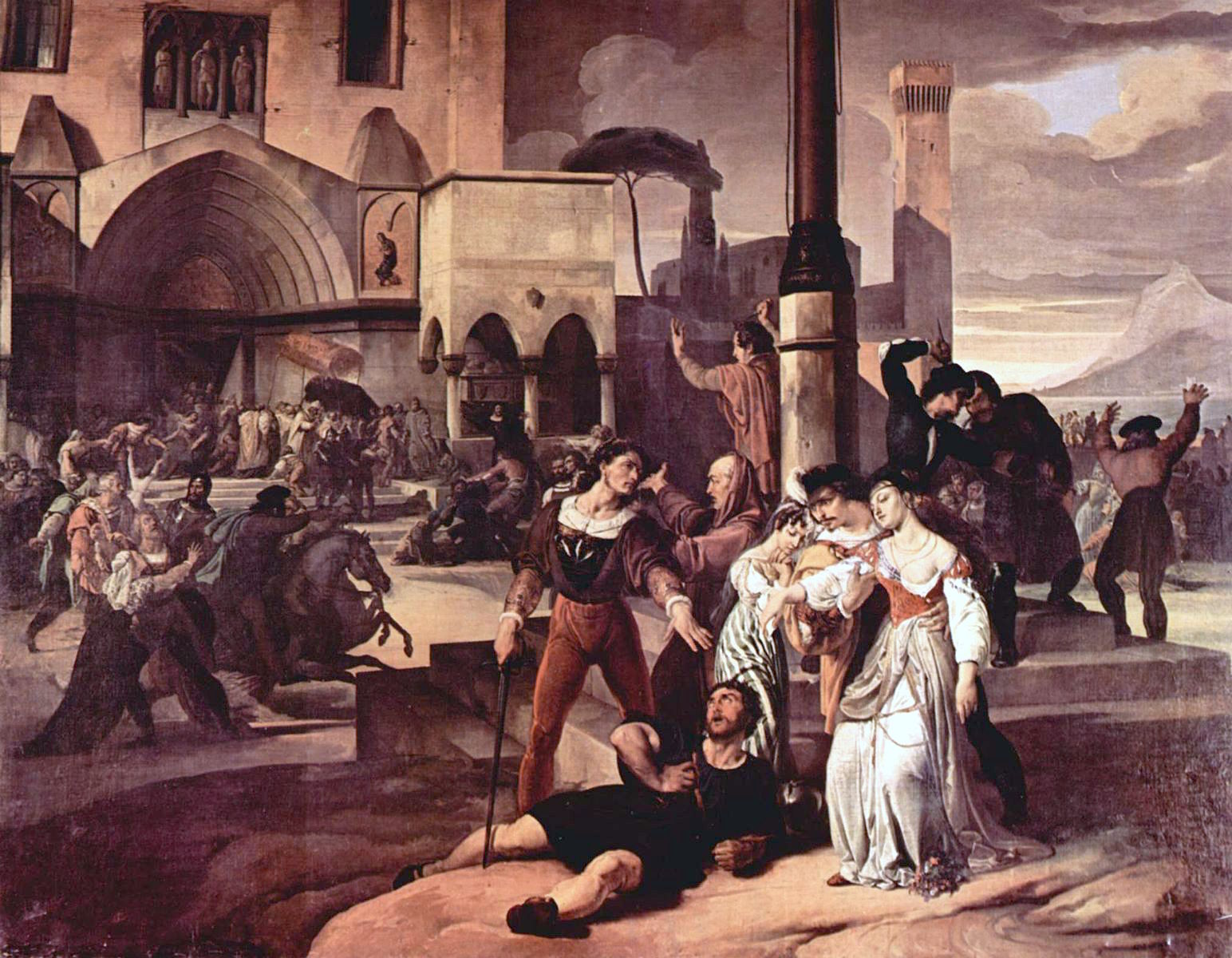|
December 11
Events Pre-1600 * 220 – Emperor Xian of Han is forced to abdicate the throne by Cao Cao's son Cao Pi, ending the Han dynasty. * 361 – Julian enters Constantinople as sole Roman Emperor. * 861 – Assassination of the Abbasid caliph al-Mutawakkil by the Turkish guard, who raise al-Muntasir to the throne, start of the "Anarchy at Samarra". * 969 – Byzantine Emperor Nikephoros II Phokas is assassinated by his wife Theophano and her lover, the later Emperor John I Tzimiskes. * 1041 – Michael V, adoptive son of Empress Zoë of Byzantium, is proclaimed emperor of the Eastern Roman Empire. * 1239 – Treaty of Benavente: the heiresses of the Kingdom of León renounce their throne to King Ferdinand III of Castile * 1282 – Battle of Orewin Bridge: Llywelyn ap Gruffudd, the last native Prince of Wales, is killed at Cilmeri near Builth Wells in mid-Wales. 1601–1900 * 1602 – A surprise attack by forces under the command of Charle ... [...More Info...] [...Related Items...] OR: [Wikipedia] [Google] [Baidu] [Amazon] |
Emperor Xian Of Han
Emperor Xian of Han (2 April 181 – 21 April 234), personal name Liu Xie (劉協), courtesy name Bohe, was the 14th and last Emperor of China, emperor of the Han dynasty#Eastern Han (25–220 AD), Eastern Han dynasty of China. He reigned from 28 September 189 until his abdication and subsequent End of the Han dynasty, end of the dynasty on 11 December 220. Liu Xie was a son of Emperor Ling of Han, Liu Hong (Emperor Ling) and was a younger half-brother of his predecessor, Liu Bian (Emperor Shao). In 189, at the age of eight, he became emperor after the warlord Dong Zhuo, who had seized control of the Han central government, deposed Emperor Shao and replaced him with Liu Xie. The newly enthroned Liu Xie, historically known as Emperor Xian, was in fact a puppet ruler under Dong Zhuo's control. In 190, when a coalition of regional warlords launched a punitive campaign against Dong Zhuo in the name of freeing Emperor Xian, Dong Zhuo ordered the destruction of the imperial capital, L ... [...More Info...] [...Related Items...] OR: [Wikipedia] [Google] [Baidu] [Amazon] |
Zoë Porphyrogenita
Zoe Porphyrogenita (also spelled Zoë; , "life"; 978 – 1050) was a member of the Macedonian dynasty who briefly reigned as Byzantine empress in 1042, alongside her sister Theodora. Before that she was enthroned as empress consort or empress mother to a series of co-rulers, two of whom were married to her. Zoe was born when her father Constantine was nominal co-emperor to his brother, Basil II. After a planned marriage to Holy Roman Emperor Otto III in 996 failed to materialise, Zoe spent subsequent years in the imperial palace. Her uncle Basil died in 1025 when Zoe was 47, and her father acceded the Byzantine throne as Constantine VIII. As he had no sons, Constantine hoped to continue the dynasty by marrying off one of his daughters. Zoe, aged 50, was married to Romanos Argyros. She and Romanos took the throne the next day on her father's death. Zoe's marriage to Romanos III was troubled, and Romanos was found dead in his bath in 1034. His death has been variously att ... [...More Info...] [...Related Items...] OR: [Wikipedia] [Google] [Baidu] [Amazon] |
1602
Events January–March * January 3 – Battle of Kinsale: The English defeat Irish rebels and their Spanish allies. (The battle happens on this date according to the Gregorian calendar used by the Irish and Spanish but on Thursday, 24 December, 1601 according to the old Julian calendar used by the English.) * February 2 (Candlemas night) – In London, the first known production of William Shakespeare's comedy ''Twelfth Night'' takes place. * March 20 – The United East India Company is established by the United Provinces States-General in Amsterdam, with the stated intention of capturing the spice trade from the Portuguese. April–June * April 20 – The Danish–Icelandic Trade Monopoly is established. * May 25 (May 15 Old Style) – English explorer Bartholomew Gosnold, sailing in the ''Concord'', becomes the first European at Cape Cod. * June 2 – Dutch explorer Joris van Spilbergen lands on the eastern side of the island of Sri Lanka, at Santhamuruthu, and be ... [...More Info...] [...Related Items...] OR: [Wikipedia] [Google] [Baidu] [Amazon] |
Mid Wales
Mid Wales ( or simply ''Y Canolbarth'', meaning "the midlands"), or Central Wales, is a region of Wales, encompassing its midlands, in-between North Wales and South Wales. The Mid Wales Regional Committee of the Senedd covered the unitary authority areas of Ceredigion and Powys and the area of Gwynedd that had previously been the district of Meirionnydd. A similar definition is used by the BBC. The Wales Spatial Plan defines a region known as "Central Wales" which covers Ceredigion and Powys. Mid Wales is dominated by the Cambrian Mountains, including the Green Desert of Wales. The region is sparsely populated, with an economy dependent on farming and small businesses. Major settlements * Aberaeron * Aberdyfi * Aberporth * Aberystwyth * Bala * Barmouth * Borth * Brecon * Builth Wells * Caersws * Cardigan * Crickhowell * Dolgellau * Fairbourne * Harlech * Hay-on-Wye * Knighton * Lampeter * Llandrindod Wells * Llandysul * Llanidloes * Llanwrtyd * Machynlleth * ... [...More Info...] [...Related Items...] OR: [Wikipedia] [Google] [Baidu] [Amazon] |
Builth Wells
Builth Wells (; ) is a market town and community in the county of Powys and historic county of Brecknockshire (Breconshire), mid Wales, lying at the confluence of rivers Wye and Irfon, in the Welsh (or upper) part of the Wye Valley. In 2011 it had a population of 2,568. Etymology ''Builth'' is a longstanding anglicisation of the Old Welsh or , which combines () ' ox' and (later ) ' lea or leas'. The town added ''Wells'' in the 19th century when its springs were promoted as a visitor attraction. Its modern Welsh name means 'Saint Mary in Ox Leas'. In the centre of the town is a large mural (about by wide) depicting , who was killed at the Battle of Orewin Bridge on 11 December 1282. Governance There are two tiers of local government covering Builth Wells, at community (town) and county level: Builth Wells Town Council and Powys County Council. The town council is based at Strand Hall on Strand Street, which also serves as a community hall and events venue. ... [...More Info...] [...Related Items...] OR: [Wikipedia] [Google] [Baidu] [Amazon] |
Cilmeri
Cilmeri (; also spelled as Cilmery) is a village and community in Powys, mid-Wales, United Kingdom in the historic county of Brecknockshire, two and a half miles west of Builth Wells on the A483 to Llandovery. The village is served by Cilmeri railway station on the Heart of Wales Line. In the 2001 census, Cilmeri Community had a population of 438 and 191 households. The population at the 2011 had fallen slightly to 431. The community includes the settlement of Llanganten and a small part of Builth Wells west of the River Ithon. The village is famous for being close to the spot where the last native prince of Wales from the Royal House of Aberffraw, Llywelyn ap Gruffudd, was either killed in action or captured alive and subjected to summary execution by the soldiers of King Edward Longshanks, on 11 December 1282. A memorial stone to Llywelyn ap Gruffudd was erected on the site in 1956 and serves as the focal point for an annual ceremony of remembrance by Welsh nationalis ... [...More Info...] [...Related Items...] OR: [Wikipedia] [Google] [Baidu] [Amazon] |
Prince Of Wales
Prince of Wales (, ; ) is a title traditionally given to the male heir apparent to the History of the English monarchy, English, and later, the British throne. The title originated with the Welsh rulers of Kingdom of Gwynedd, Gwynedd who, from the late 12th century, used it (albeit inconsistently) to assert their supremacy over the other Welsh rulers. However, to mark the finalisation of his conquest of Wales, in 1301, Edward I of England invested his son Edward of Caernarfon with the title, thereby beginning the tradition of giving the title to the heir apparent when he was the monarch's son or grandson. The title was later claimed by the leader of a Welsh Revolt, Welsh rebellion, Owain Glyndŵr, from 1400 until 1415. King Charles III created his son William, Prince of Wales, William Prince of Wales on 9 September 2022, the day after his accession to the throne, with formal letters patent issued on 13 February 2023. The title has become a point of controversy in Wales. Welsh ... [...More Info...] [...Related Items...] OR: [Wikipedia] [Google] [Baidu] [Amazon] |
Llywelyn Ap Gruffudd
Llywelyn ap Gruffudd ( – 11 December 1282), also known as Llywelyn II and Llywelyn the Last (), was List of rulers of Gwynedd, Prince of Gwynedd, and later was recognised as the Prince of Wales (; ) from 1258 until his death at Cilmeri in 1282. Llywelyn was the son of Gruffudd ap Llywelyn ap Iorwerth and grandson of Llywelyn ab Iorwerth (also known as Llywelyn the Great, or Llywelyn I), and he was one of the last native and independent princes of Wales before its Conquest of Wales by Edward I, conquest by Edward I of England and English rule in Wales that followed, until Owain Glyndŵr held the title during his Glyndŵr rebellion, rebellion of 1400–1415. Genealogy and early life Llywelyn was the second of the four sons of Gruffudd ap Llywelyn ap Iorwerth, the eldest son of Llywelyn ab Iorwerth, and Senana ferch Caradog, the daughter of Caradoc ap Thomas ap Rhodri, Lord of Anglesey. The eldest was Owain Goch ap Gruffudd and there were two younger brothers, Dafydd ap Gruffy ... [...More Info...] [...Related Items...] OR: [Wikipedia] [Google] [Baidu] [Amazon] |
Battle Of Orewin Bridge
The Battle of Orewin Bridge (also known as the Battle of Irfon Bridge) was fought between English (led by the Marcher Lords) and Welsh armies on 11 December 1282 near Builth Wells in mid-Wales. It was a decisive defeat for the Welsh because their leader, Llywelyn ap Gruffudd was killed, and this effectively ended the autonomy of Wales. Background of the War Llywelyn had already fought a war against Edward I of England in 1277. Edward had organised a large full-time army with which he overran all North Wales as far west as the Conwy River, and a fleet with which he captured Anglesey, depriving the Welsh of much of their grain. Llywelyn was forced to come to humiliating terms, and ceded large areas of Wales to England. Over the five years which followed, there was continued tension between Llywelyn and Edward over various lawsuits, and increasing unrest between the Welsh people and their English administrators in the newly transferred areas. The revolt was actually begu ... [...More Info...] [...Related Items...] OR: [Wikipedia] [Google] [Baidu] [Amazon] |
1282
Year 1282 ( MCCLXXXII) was a common year starting on Thursday of the Julian calendar. Events By place Europe * March – Welsh forces under Prince Dafydd ap Gruffydd, brother of Llywelyn ap Gruffudd, attack and take control of Hawarden Castle. The garrison is massacred and Constable Roger de Clifford is taken prisoner. Llywelyn who has sworn fealty to King Edward I (Longshanks), joins Dafydd in his revolt against the English. Their actions lead to the final English conquest of Wales, by Edward. * March 30 – War of the Sicilian Vespers: A group of Sicilian conspirators begins an uprising against the rule of King Charles I; over the next six weeks, thousands of French are killed. The rebellion forces Charles to abandon the planned crusade against the Byzantines, while still en route to the target city of Constantinople and allows King Peter III (the Great) to take over rule of the island from Charles (which in turn leads to Peter's excommunication by Pope ... [...More Info...] [...Related Items...] OR: [Wikipedia] [Google] [Baidu] [Amazon] |
Ferdinand III Of Castile
Ferdinand III (; 1199/120130 May 1252), called the Saint (''el Santo''), was King of Castile from 1217 and King of León from 1230 as well as King of Galicia from 1231. He was the son of Alfonso IX of León and Berengaria of Castile. Through his second marriage he was also Count of Aumale. Ferdinand III was one of the most successful kings of Castile, securing not only the permanent union of the crowns of Castile and León, but also masterminding the most expansive southward territorial expansion campaign yet in the Guadalquivir Valley, in which Islamic rule was in disarray in the wake of the defeat of the Almohad caliphate at the Battle of Las Navas de Tolosa. His repeated and decisive victories against the Islamic Caliphate earned him the title Athleta Christi, meaning 'Champion of Christ', which was conferred upon him by Pope Gregory IX. By military and diplomatic efforts, Ferdinand greatly expanded the dominions of Castile by annexing the Guadalquivir, crown of Guadalquivir ... [...More Info...] [...Related Items...] OR: [Wikipedia] [Google] [Baidu] [Amazon] |
Kingdom Of León
The Kingdom of León was an independent kingdom situated in the northwest region of the Iberian Peninsula. It was founded in 910 when the Christian princes of Kingdom of Asturias, Asturias along the Bay of Biscay, northern coast of the peninsula shifted their capital from Oviedo to the city of León, Spain, León. The List of Leonese monarchs, kings of León fought civil wars, wars against neighbouring kingdoms, and campaigns to repel invasions by both the Moors and the Vikings, all in order to protect their kingdom's changing fortunes. García I of León, García is the first of the kings described by the charters as reigning in León. It is generally assumed that the old Asturian kingdom was divided among the three sons of Alfonso III of Asturias: García (León), Ordoño II of León, Ordoño (Galicia (Spain), Galicia) and Fruela II of Asturias, Fruela (Asturias), as all three participated in deposing their father. When García died in 914, León went to Ordoño, who now ruled ... [...More Info...] [...Related Items...] OR: [Wikipedia] [Google] [Baidu] [Amazon] |







